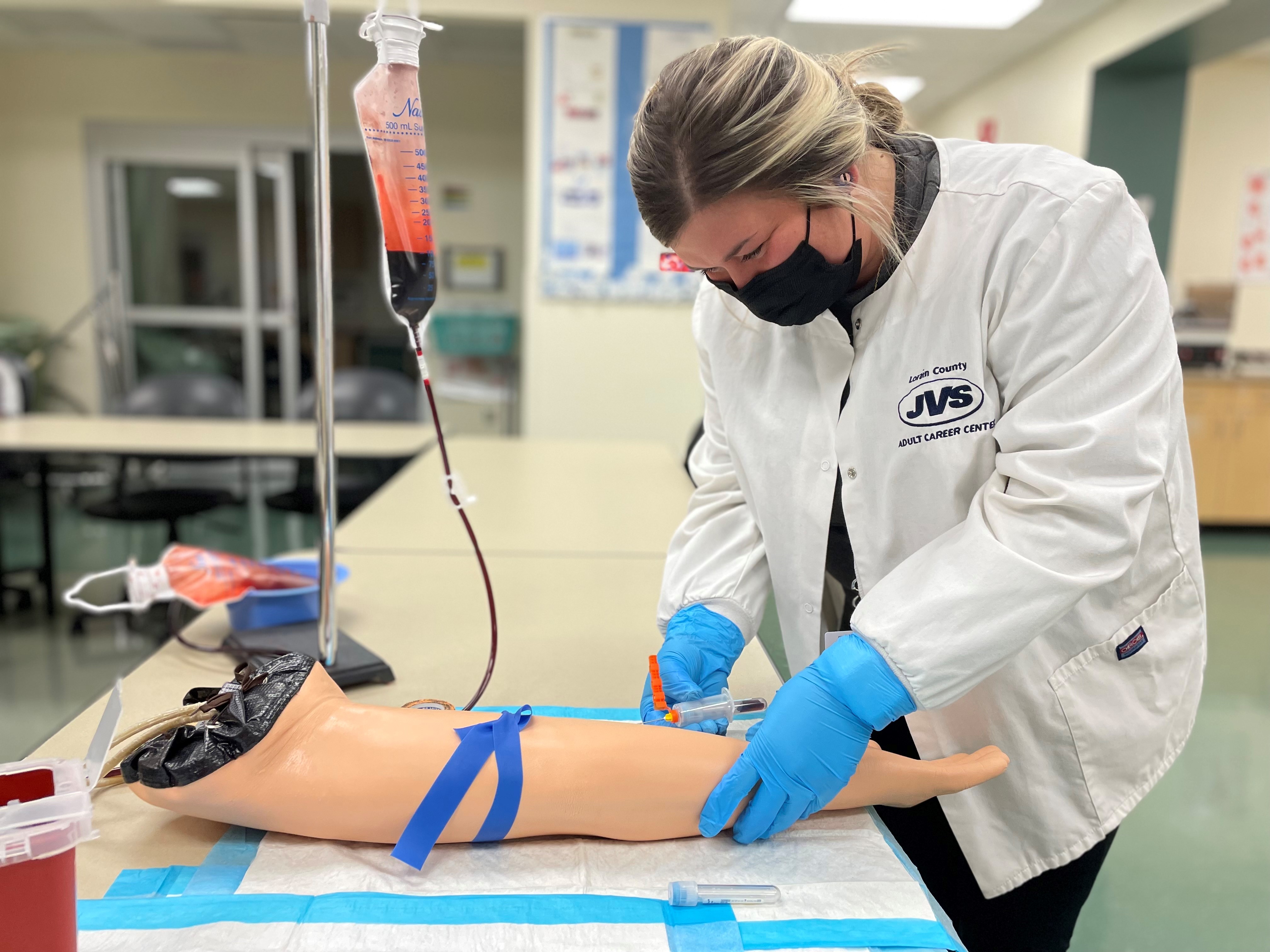What Does Northeast Medical Institute - New Haven Campus Phlebotomy Course & Cna Class Do?
What Does Northeast Medical Institute - New Haven Campus Phlebotomy Course & Cna Class Do?
Blog Article
Not known Details About Northeast Medical Institute - New Haven Campus Phlebotomy Course & Cna Class
Table of ContentsNortheast Medical Institute - New Haven Campus Phlebotomy Course & Cna Class Fundamentals ExplainedThings about Northeast Medical Institute - New Haven Campus Phlebotomy Course & Cna ClassThe 9-Minute Rule for Northeast Medical Institute - New Haven Campus Phlebotomy Course & Cna ClassHow Northeast Medical Institute - New Haven Campus Phlebotomy Course & Cna Class can Save You Time, Stress, and Money.Things about Northeast Medical Institute - New Haven Campus Phlebotomy Course & Cna ClassThe Facts About Northeast Medical Institute - New Haven Campus Phlebotomy Course & Cna Class Revealed
However, using such devices should be accompanied by other infection avoidance and control techniques, and training in their usage. Not all safety and security tools are relevant to phlebotomy. Prior to picking a safety-engineered gadget, customers ought to completely check out available gadgets to identify their appropriate usage, compatibility with existing phlebotomy methods, and efficacy in shielding personnel and clients (12, 33).For settings with reduced resources, cost is a driving aspect in procurement of safety-engineered devices - CNA Courses. Where safety-engineered tools are not offered, competent use a needle and syringe serves. Accidental direct exposure and specific info about an occurrence ought to be videotaped in a register. Support solutions should be advertised for those that go through accidental exposure.
Among the crucial markers of quality of care in phlebotomy is the involvement and teamwork of the person; this is equally beneficial to both the health and wellness worker and the individual. Clear info either created or spoken should be available to each client who goes through phlebotomy. Annex F supplies example text for explaining the blood-sampling treatment to an individual. labelling); transport problems; interpretation of outcomes for scientific management. In an outpatient department or clinic, provide a dedicated phlebotomy cubicle containing: a clean surface area with two chairs (one for the phlebotomist and the other for the patient); a hand wash container with soap, running water and paper towels; alcohol hand rub. In the blood-sampling area for an outpatient division or center, offer a comfortable reclining sofa with an arm remainder.
Everything about Northeast Medical Institute - New Haven Campus Phlebotomy Course & Cna Class
Make certain that the indicators for blood tasting are clearly defined, either in a created protocol or in recorded directions (e.g. in a laboratory form). In any way times, follow the methods for infection avoidance and control noted in Table 2.2. Infection avoidance and control practices. Gather all the tools needed for the treatment and location it within safe and simple reach on a tray or cart, making sure that all the things are clearly noticeable.
Introduce yourself to the client, and ask the client to state their full name. Check that the laboratory form matches the person's identification (i.e. match the individual's information with the lab type, to make certain exact recognition).
Make the individual comfy in a supine setting (preferably). Place a tidy paper or towel under the individual's arm. Go over the test to be carried out (see Annex F) and obtain verbal consent. The patient has a right to reject a test at any moment prior to the blood tasting, so it is necessary to make sure that the client has recognized the treatment.
Northeast Medical Institute - New Haven Campus Phlebotomy Course & Cna Class Can Be Fun For Anyone
Expand the person's arm and inspect the antecubital fossa or forearm. Locate a capillary of a great size that is visible, straight and clear.
DO NOT place the needle where capillaries are diverting, since this raises the opportunity of a haematoma. The blood vessel should show up without applying the tourniquet. Finding the capillary will certainly aid in figuring out the right dimension of needle. Use the tourniquet concerning 45 finger sizes above the venepuncture website and re-examine the capillary.
Specimens from main lines bring a risk of contamination or wrong laboratory test outcomes. It is appropriate, but not optimal, to attract blood specimens when first presenting an in-dwelling venous tool, before attaching the cannula to the intravenous fluids.
Getting The Northeast Medical Institute - New Haven Campus Phlebotomy Course & Cna Class To Work
Failure to allow adequate call time raises the threat of contamination. DO NOT touch the cleansed website; in certain, DO NOT put a finger over the capillary to guide the shaft of the revealed needle.
Ask the individual to create a clenched fist so the blood vessels are extra popular. Enter the vein swiftly at a 30 degree angle or much less, and proceed to present the needle along the capillary at the simplest angle of entry - CNA Training. Once sufficient blood has actually been accumulated, release the tourniquet BEFORE taking out the needle
More About Northeast Medical Institute - New Haven Campus Phlebotomy Course & Cna Class
Withdraw the needle delicately and apply mild stress to the site with a clean gauze or dry cotton-wool round. Ask the client to hold the gauze or cotton wool in position, with the arm extended and increased. Ask the patient NOT to bend the arm, due to the fact that doing so creates a haematoma.

The 10-Minute Rule for Northeast Medical Institute - New Haven Campus Phlebotomy Course & Cna Class
Where feasible, maintain the tubes in a shelf and move the rack towards you - https://trello.com/w/northeastmed. If the sample tube does not have a rubber stopper, infuse very slowly into the tube as reducing the pressure and speed used to move the sampling decreases the danger of haemolysis.

Report this page